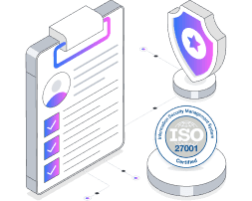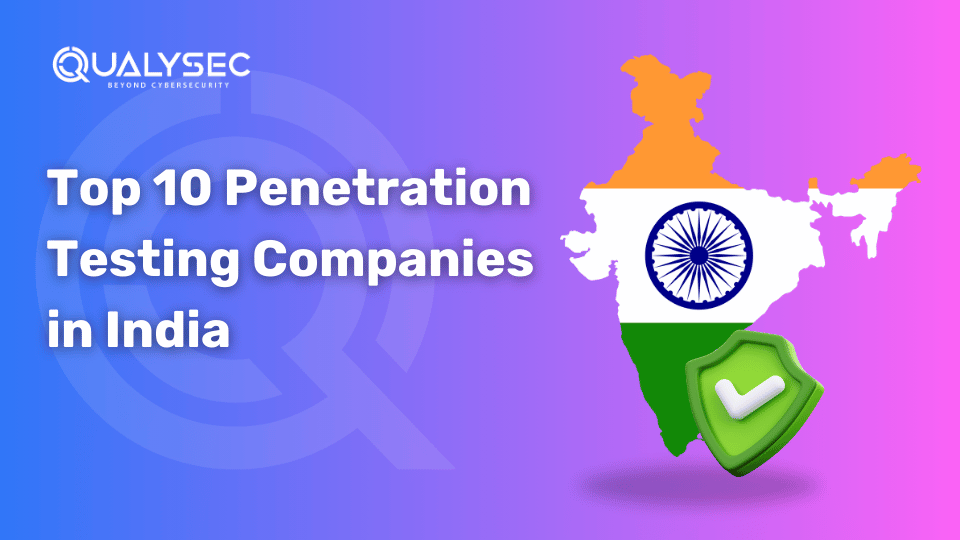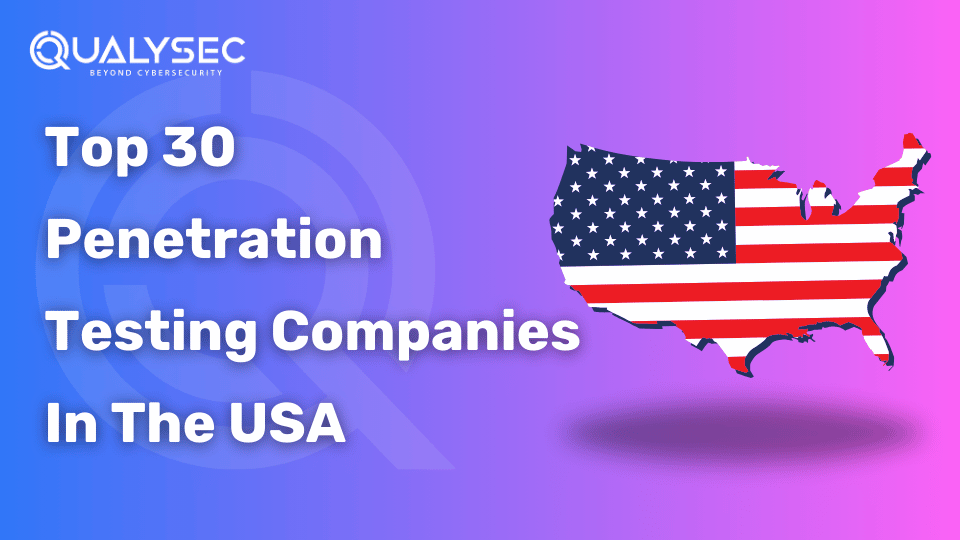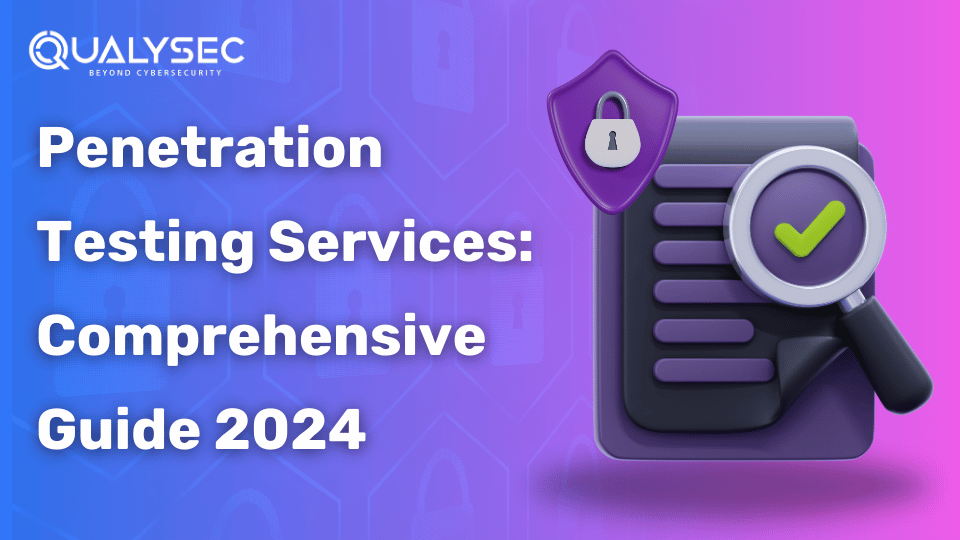Penetration testing services or pentesting is a security practice where cybersecurity experts try to find and exploit vulnerabilities present in applications, networks, and other digital systems. The pen testers, a.k.a ethical hackers, simulate real attacks on the target environment to identify security flaws in its defenses that attackers could take advantage of. Imagine a bank hiring a thief to break into their vault. If the thief succeeds, the bank will know where they lack in security and take active steps to fix it. Similarly, in penetration testing services, organizations hire a third-party cybersecurity firm to hack into their applications. The testers try different ways to breach the security defenses. They document the pathways through which they were able to bypass the security. Then they share the test results with the organization so that they can promptly address their security weaknesses. Since there are roughly 2,200 cyberattacks every day, organizations need to prioritize penetration testing if they want to keep their valuable digital assets safe. Therefore, this blog is going to dive into the fundamentals of penetration testing and its various aspects. If you have software applications or use networks and the cloud, you should know the importance of penetration testing services and why they are a must in this digital age. Benefits of Penetration Testing Services As per IBM, the average cost of a data breach is around $4.45 million. If this isn’t the reason for you to conduct penetration testing, here are several compelling reasons: Regular penetration testing services check whether your defenses are resilient against cyberattacks. Additionally, it helps in keeping your security protocols up to date. Types of Penetration Testing This section is going to be a bit tricky, as some consider the approach pen testers take are the types of penetration testing (black, white, and grey box). While others assume the areas where penetration testing can be done are the types (applications, networks, etc.). Nevertheless, since we care more about the digital assets that can be secured through pen testing, we will consider that. Here are the 5 main types of penetration testing: 1. Network Penetration Testing Network penetration testing services help identify vulnerabilities in the organization’s network infrastructure, including systems, hosts, and devices. The pen testers use both internal and external tests to find threats in firewall configurations, SQL servers, IPS/IDS, open ports, proxy servers, domain name systems (DNS), etc. that could allow attackers to breach the network systems. Commonly network vulnerabilities include: 2. Web Application Penetration Testing In web application penetration testing, ethical hackers try to find possible security flaws in the application that could be a possible entry point for attackers. The goal is to detect all the vulnerabilities on the server side and in the web application components, such as front and backends, APIs, and third-party services. OWASP’s top 10 web application vulnerabilities include: 3. Mobile Application Penetration Testing Since mobile apps store highly sensitive user data and handle financial transactions, they are one of the most targeted components. In fact, Over 2 million cyberattacks occurred on mobile devices globally in December 2022. In mobile application penetration testing, the testers check for possible entry points, test on all devices (Android, iOS, etc.), stay updated on the latest security patches, and use both automated and manual testing techniques. Major mobile application cyber threats include: 4. Cloud Penetration Testing Cloud penetration testing examines the security measures of cloud-specific configurations, cloud applications, passwords, encryption, APIs, databases, and storage access. Since most organizations now use cloud computing services like Microsoft Azure, Google Cloud Platform (GCP), and Amazon Web Services (AWS), regular pen tests can help organizations prevent constant security threats. Common threats in cloud computing: 5. IoT Penetration Testing IoT devices like smartwatches, voice-controlled devices, smart security devices, autonomous vehicles, etc. are all the rage, but they also have their fair share of security risks. Since these devices are interconnected through the internet and store vast amounts of user data, IoT penetration testing helps find vulnerabilities in the device configuration and network by simulating real attacks. OWASP top 10 IoT vulnerabilities: What are the Tools Used in Penetration Testing? A comprehensive penetration test uses a combination of both automated pen testing tools and manual techniques. These tools are vulnerability scanners that also generate accurate reports. However, as these tools have a limited database of vulnerabilities, they can not do in-depth analysis. Nevertheless, these tools are very effective in identifying known vulnerabilities quickly. There are several penetration tools available, but only a handful are the best, such as: 1. Burp Suite A comprehensive penetration testing tool for web applications. It includes components for scanning, crawling, and manipulating traffic, which allows testers to identify security vulnerabilities and exploit them. 2. Nmap A network scanning tool that provides detailed info about network services, hosts, and operating systems. It is a highly used open-source tool for network discovery and security audit. 3. Metasploit Metasploit is a penetration testing framework that includes a huge library of exploitable vulnerabilities. It allows pen testers to create custom exploits, simulate attacks, and automate pen testing. It is widely used to identify vulnerabilities in operating systems and applications. 4. Nessus A scanner that detects vulnerabilities in applications, loudness, and network resources. It has a vast plugin database that is compiled automatically to improve the scan performance and reduce the time required to research and remediate vulnerabilities. 5. OWASP ZAP OWASP Zed Attack Proxy (ZAP) is a web application penetration testing tool. It performs a wide range of security functions, including passive scanning, dictionary lists, crawlers, and intercepting web requests. It helps identify major vulnerabilities in web applications like SQL inject and XSS. 6. MobSF Mobile Security Framework (MobSF) is an all-in-one, automated mobile application penetration testing framework that can perform static and dynamic analysis. It helps identify vulnerabilities in all types of OS including Android and iOS. 7. Nikto It is an open-source command-line vulnerability scanner for applications that scans web servers for harmful files/CGIs, outdated software, and other security issues. It






